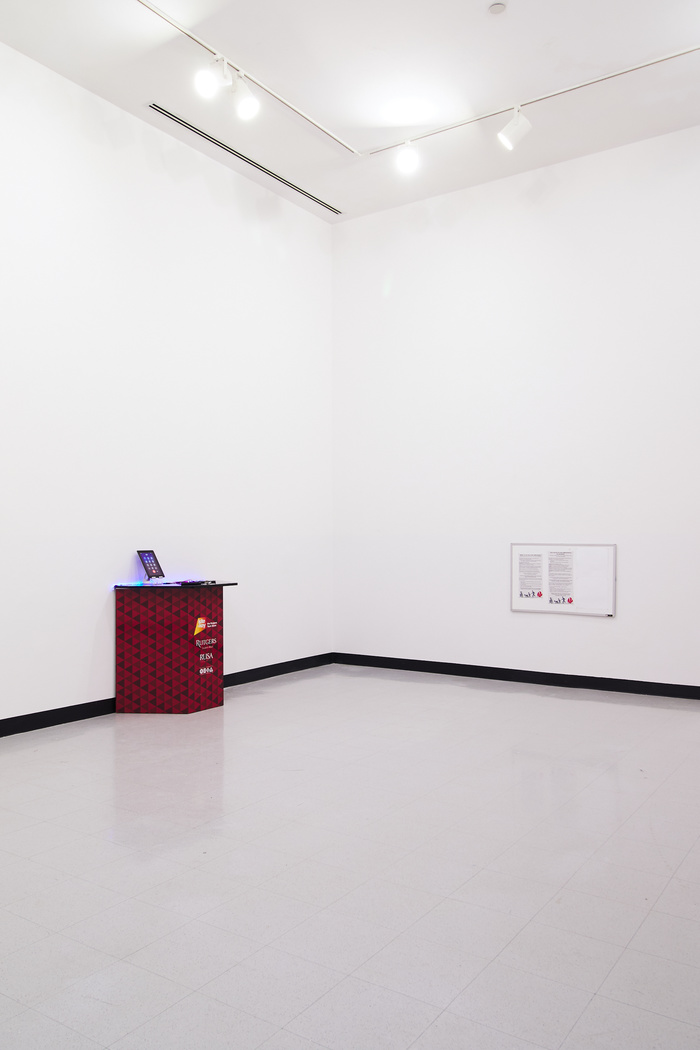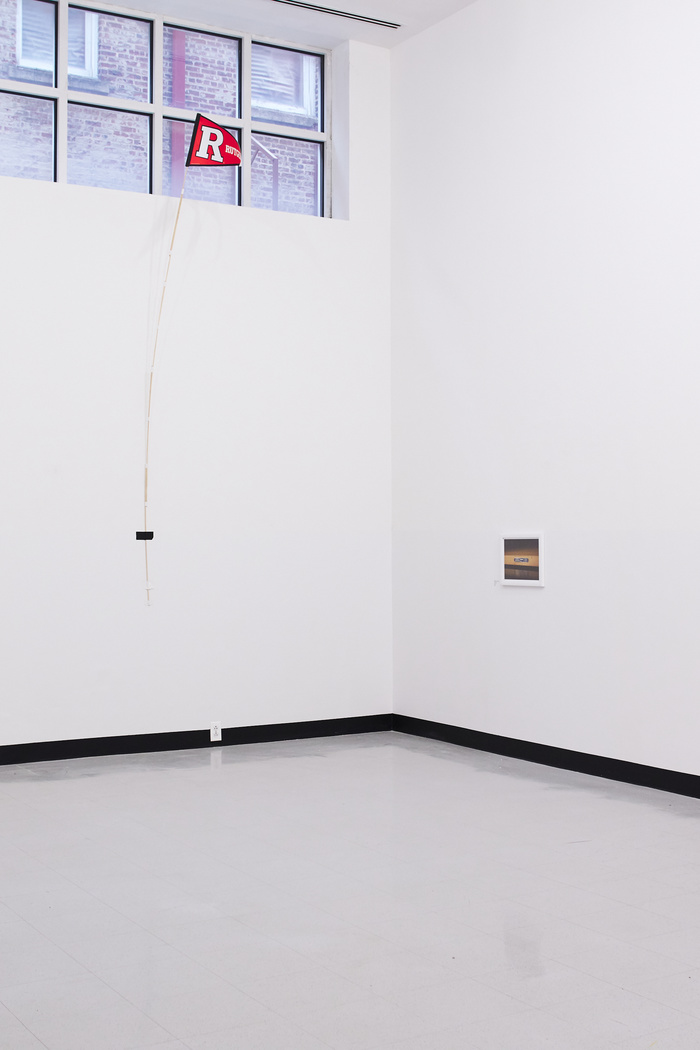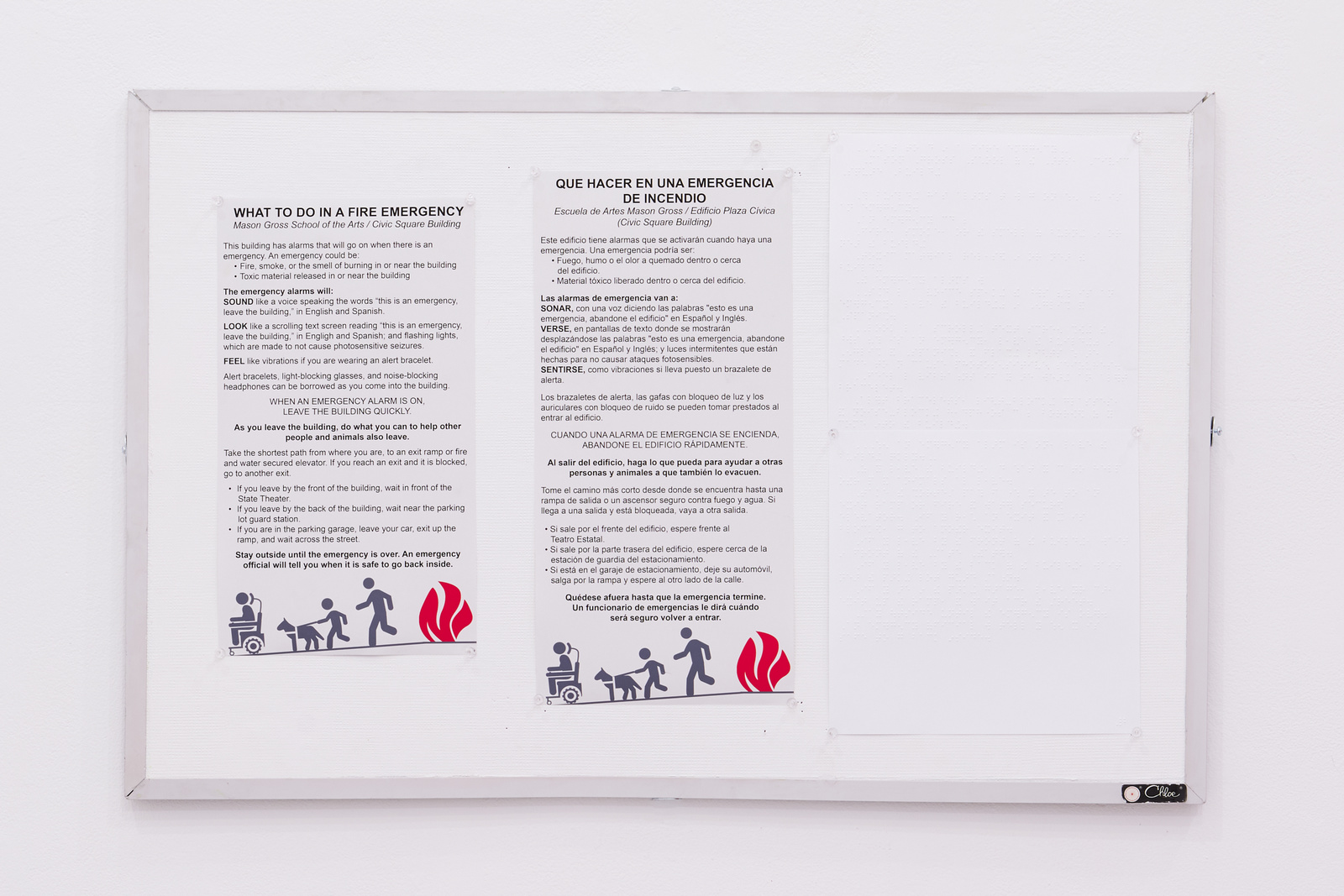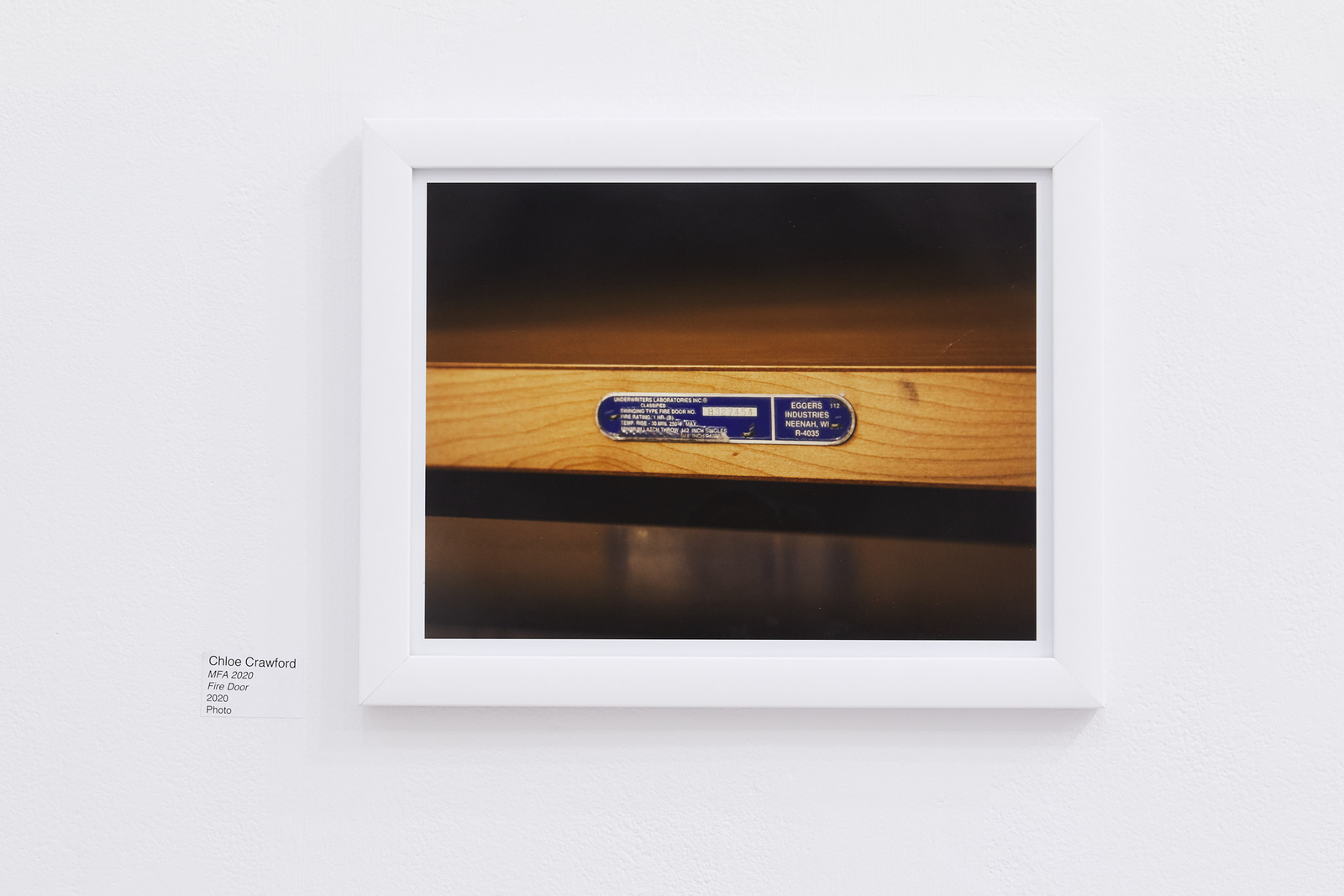Buddy System mimics the public spaces in
Civic Square Building, which houses Rutgers University's Mason Gross School of the Arts.
For So Much Better Than We Were, the walls were patched,
repaired and painted using the same shade of white as in the building’s public hallways, with the same black trim, and accent wall
of Rutgers’ official color, Scarlet Red.
The repair work was a nearly invisible but integral part to set the conditions
for the painting and display of the other work. This highlights the hidden, devalued labor within gallery or
institutional spaces, such as custodial, janitorial and maintenance. And is
also analogous to the labor disabled
people do to set the conditions for their existence or appearance in a
(public) space. This has much in common with other forms of unwaged labor,
which increasingly as it pertains to disability, is largely administrative
navigation of bureaucratic systems.
The work stopped in a straight line at my perpetually-seated height (51 inches),
dividing the walls as areas of care or attention, and neglect.
The floor was swept, washed, and shined, but nothing was altered above the
division line, including the lighting. The hanging of the other works on top of the mural
bypassed traditional gallery guidelines which stipulate work ought
to rest at the eye-level of the average standing viewer,
guidelines which also prescribe what constitutes the average viewer.
The title Buddy System is sourced from Rutgers University Institutional
Planning’s official policy on the “Evacuation of Individuals with Physical
Disabilities.” The buddy system is described there as:
During the first week of classes or employment, make acquaintances with fellow
students, residents, class members, or office workers. Inform them of any special
assistance that may be required in the event of a fire alarm. [...]
When the fire alarm sounds, the ‘Buddy’ (or assistant) will make sure of
the location of the person with a disability, then go outside and inform
emergency personnel that a person in that location needs assistance in leaving
the building. Emergency personnel will then enter the building and evacuate that person.
The policy advises
against the very collective responsibility and caring relationship the term
suggests. The plan tamps
down the reciprocal nature of relationships as though the roles of helper
and helpee are fixed and defined by absence or presence of disability. In
actuality, these roles are flexible and changeable, as disability is in
itself. One does not need to be disabled to require help. Further troubling,
the policy suggests a disabled person needs to be liked, or have some kind of
mutually positive relationship with another person, in order to receive, in
this case, life-saving assistance.







